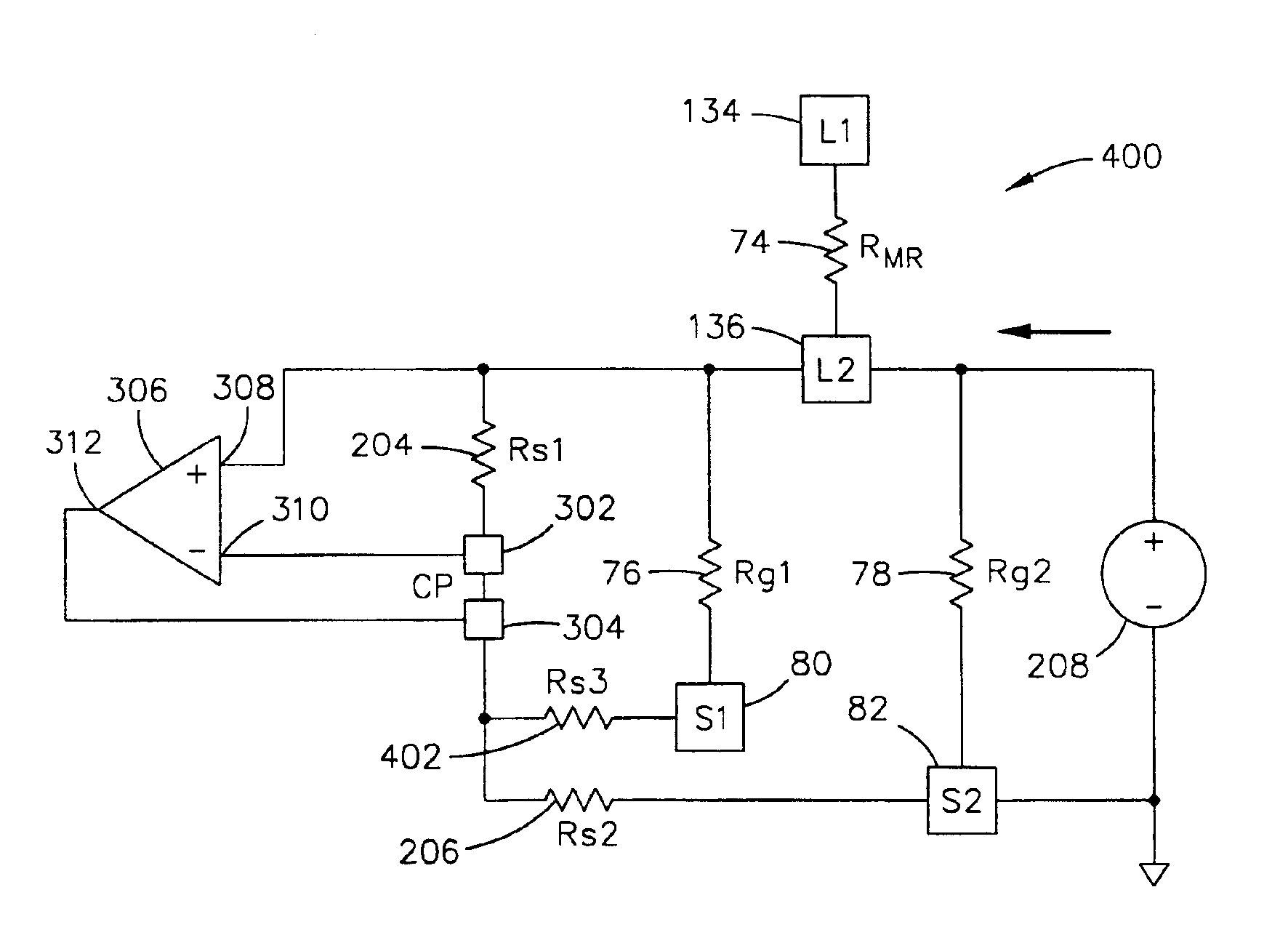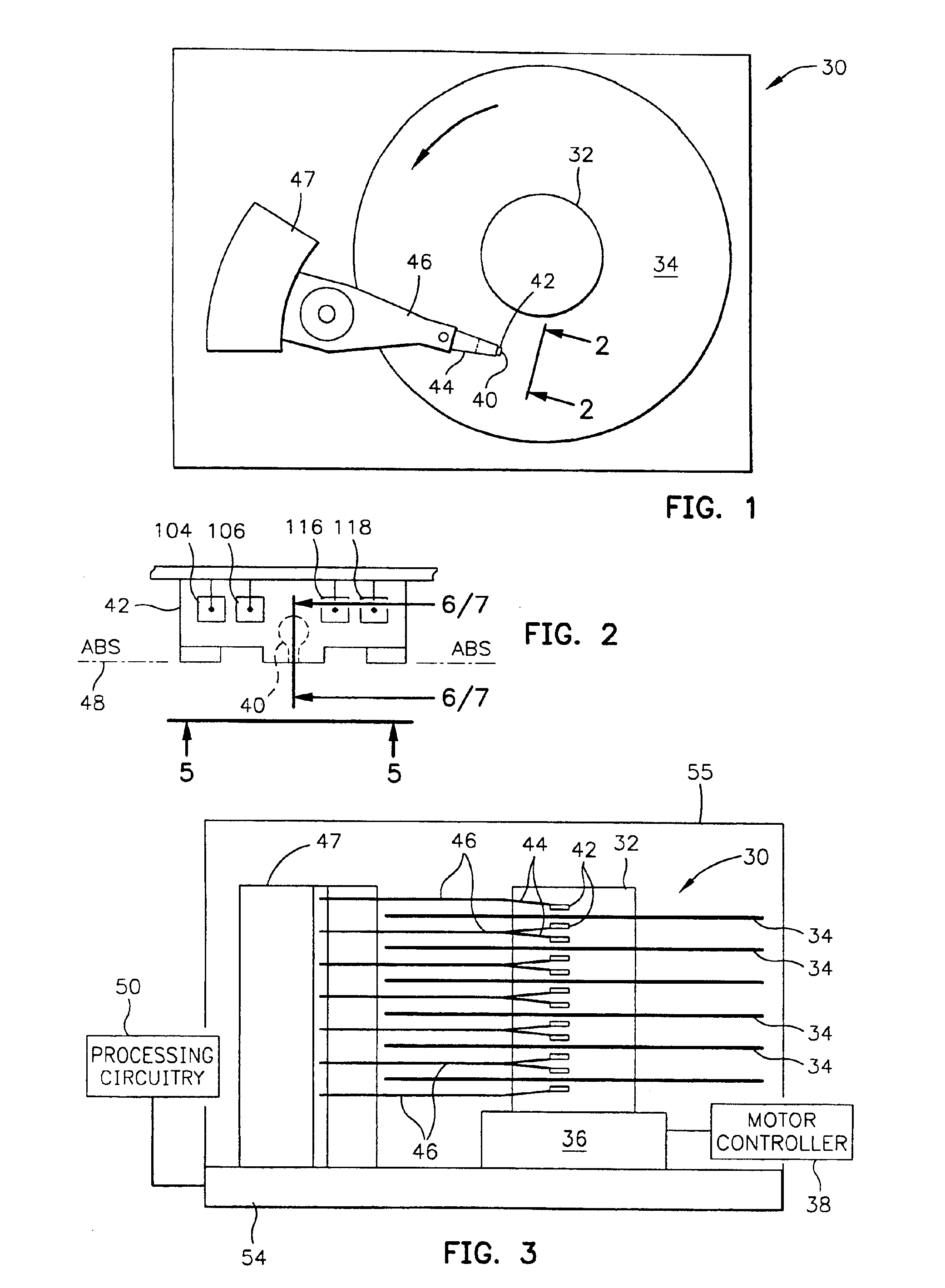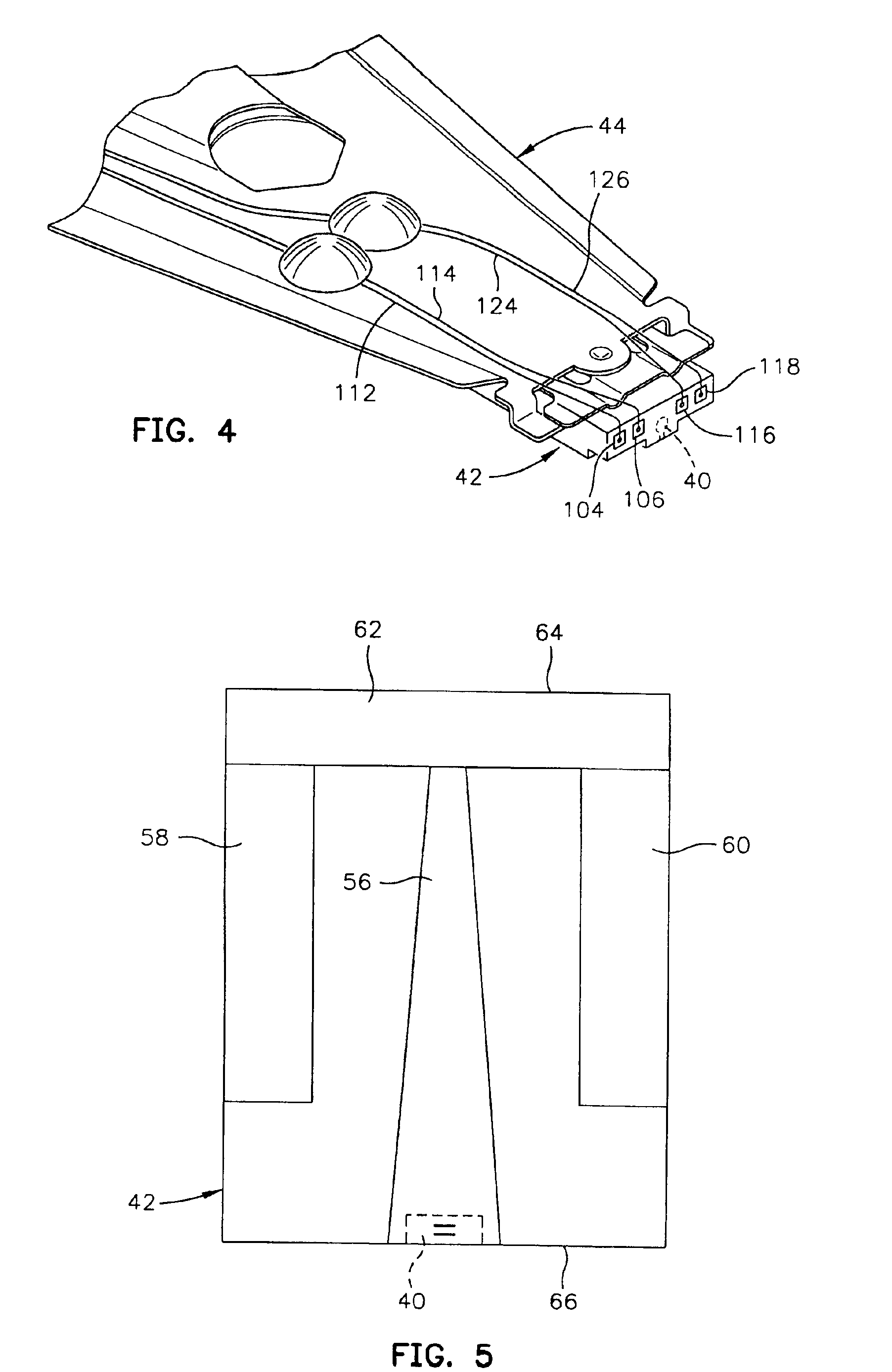Method of reducing ESD damage in thin film read heads which enables measurement of gap resistance
a thin film read head and gap resistance technology, applied in the field of thin film read head esd damage reduction devices, can solve problems such as potential difference across gap layers, dielectric breakdown, and electrical shorts at the location of breakdown, and achieve the effect of reducing esd damage to the sensor
- Summary
- Abstract
- Description
- Claims
- Application Information
AI Technical Summary
Benefits of technology
Problems solved by technology
Method used
Image
Examples
first embodiment
of the Invention
[0038]A first embodiment 200 of the present invention is shown in FIG. 12 which shows the first and second lead layers 134 and 136 (L1 and L2) connected to the read sensor 74. The sensor 74 is shown as having a resistance RMR. FIG. 12 also shows the first and second shield layers S1 and S280 and 82 are shorted by a lead 202. First and second resistors 204 and 206 are connected across the second lead L2 and the first and second shield layers S1 and S2. With this arrangement the first read gap layer 76 has a resistance RG1 between the shield layers S1 and S2 and the second lead L2 and the second read gap layer 78 has a resistance RG2 between the shield layers S1 and S2 and the second lead L2. Alternatively, the first and second resistors 204 and 206 may be connected between the first and second shield layers S1 and S2 and the first lead layer L1. In this instance, the resistance RG1 would be the resistance between the shield layers S1 and S2 and the first lead layer L1...
second embodiment
of the Invention
[0040]FIG. 14 illustrates a second embodiment 300 of the present invention which is an improvement over the first embodiment 200 in FIG. 13. The embodiment 300 is the same as the embodiment 200 except for the following. The center point (CP) has two separate connections 302 and 304. The second lead L2 can be considered as a first node in the circuit and the connection 302 can be considered as a second node. An operational amplifier 306 has a first input 308 connected to the second lead L2 (first node) and a second input 310 connected to the first contact 302 (second node). The output 312 of the operational amplifier is connected to the second contact 304 which is located between the first contact 302 and the second resistor 206. The operational amplifier 306, which is configured as a unity gain buffer, is adjusted so that it drives the center point (CP) between the resistors 204 and 206 to the same potential as the second lead L2 (first node). As a result, there is z...
third embodiment
of the Invention
[0042]FIG. 15 shows a third embodiment 400 of the present invention which can measure the resistances RG1 and RG2 of the first and second gap layers 76 and 78 separately and is therefore an improvement over the embodiment 300 in FIG. 14. The embodiment 400 is the same as the embodiment 300 in FIG. 14 except for the following. The first and second shield layers S1 and S2 are no longer shorted together and a third resistor 402 having a resistance RS3 is connected between the center point (second node) and the first shield layer S1. The resistances RG1 and RG2 of the first and second gap layers 76 and 78 can now be determined separately. The resistance RG2 of the second gap layer 78 can be determined when the circuit tester 208 is connected across the second shield layer S2 and the second lead layer L2. Optionally, the resistance RG1 of the first read gap layer 76 can be determined by connecting the circuit tester 208 across the first shield layer S1 and the second lead...
PUM
| Property | Measurement | Unit |
|---|---|---|
| nonmagnetic | aaaaa | aaaaa |
| resistance RG1 | aaaaa | aaaaa |
| resistance RG2 | aaaaa | aaaaa |
Abstract
Description
Claims
Application Information
 Login to View More
Login to View More - R&D
- Intellectual Property
- Life Sciences
- Materials
- Tech Scout
- Unparalleled Data Quality
- Higher Quality Content
- 60% Fewer Hallucinations
Browse by: Latest US Patents, China's latest patents, Technical Efficacy Thesaurus, Application Domain, Technology Topic, Popular Technical Reports.
© 2025 PatSnap. All rights reserved.Legal|Privacy policy|Modern Slavery Act Transparency Statement|Sitemap|About US| Contact US: help@patsnap.com



